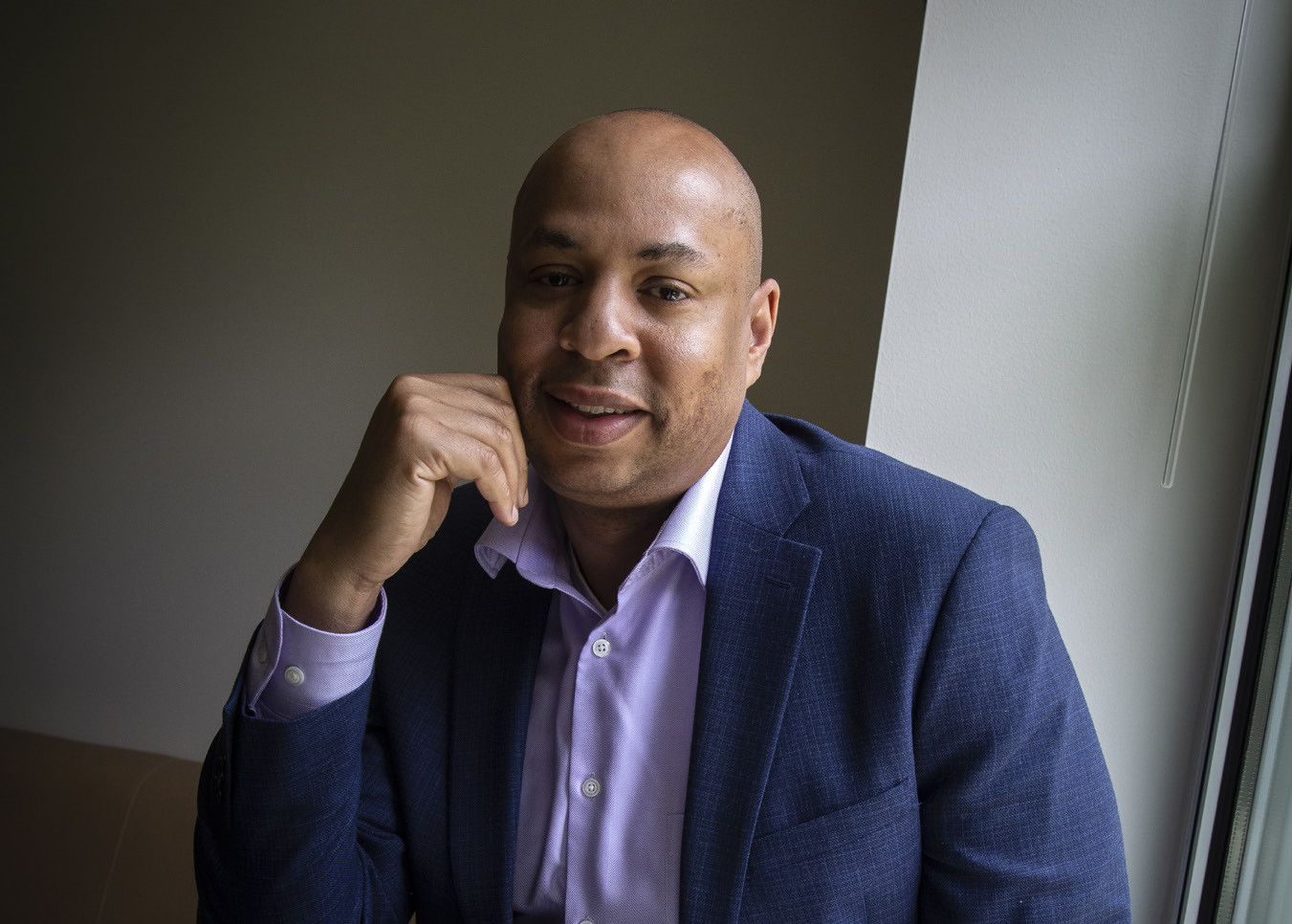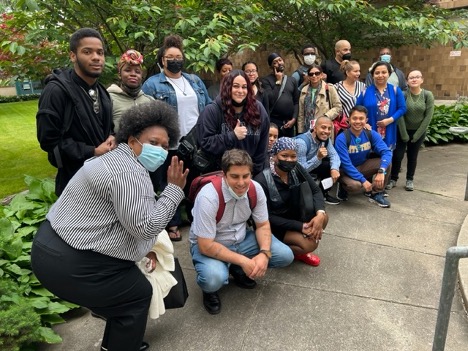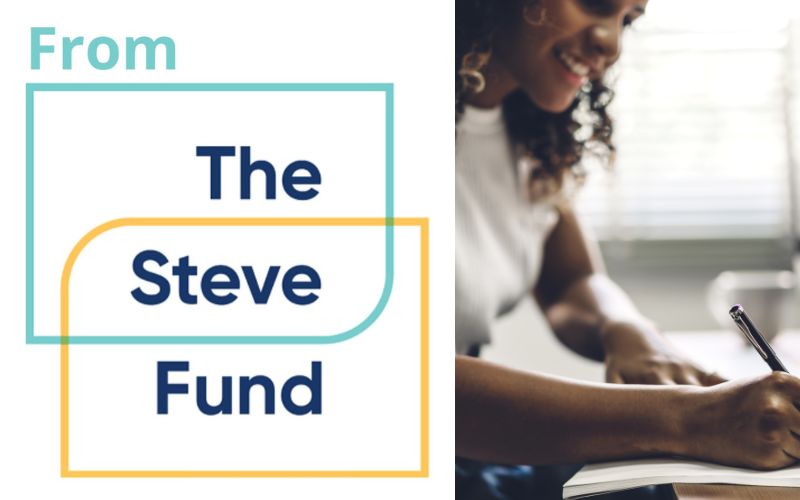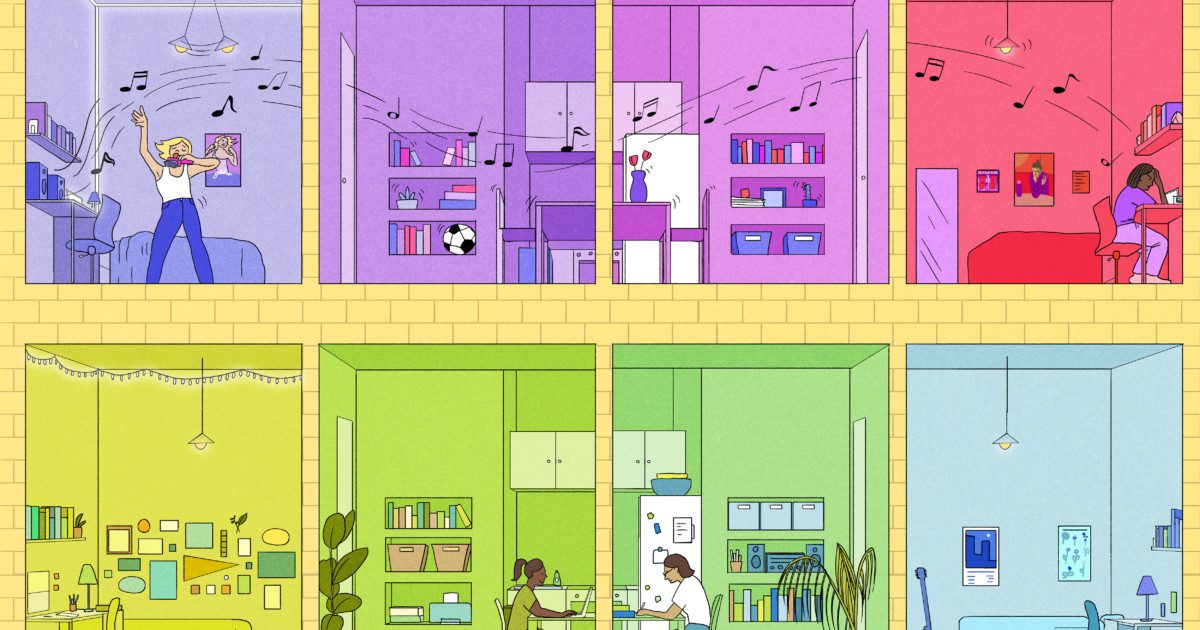MM: Dr. Wood is well-known as a change agent in the college mental health community. He is the architect of the TCU Comprehensive Collaborative Care Model, which to me, sounds like a counseling center without walls. What are some of the drivers of that very interesting approach?
EW:
The drivers are connected to how we developed the model. The narrative out there about college mental health is that campuses are being overrun with students with mental health needs and that schools are just incapable of meeting that demand. That narrative can be dangerous because it can erode the confidence that people, our stakeholders, have in our services. It can also just kind of decrease the morale of the staff.
When we looked at the data about what’s going on our campus, but also on campuses nationwide, we found that there are these three critical data points. Those data points are actually the basis of our model. For example, one of the data points from the Center of Collegiate Mental Health that was definitely true at TCU was that counseling centers were spending about 50% of their resources on 20% of our clients, and those clients were really the high-risk clients. They would come to our campus, and usually the counseling center would refer them off campus because they were beyond the scope of care. But the student would still be living in the residence hall, still going to classes, and so the people who were concerned, would send a student back to the counseling centers to do welfare checks, things like that, and so we’re still spending a lot of time and resources on those students who may or may not be getting treatment. So that was one driver.
The other driver, which is true for the nation and also true for TCU, is that a lot of our current clients are actually former clients who’ve been to counseling before. And so that kind of speaks to the issue of capacity. Because on one hand, that’s great that they’re coming back to us, but then it really does beg the question about what type of aftercare services are we providing because if we have a student with episodic depression and we stop with symptom remissions, it shouldn’t be a shock that they’re coming back. So we thought, ‘what if we have something for those students after they finish counseling? Would they be less likely to reuse services?’
Then there’s just the stress level among staff. If you look at counseling center staff, they’re reporting a high level of stress and one of the biggest sources of the stress is unscheduled appointments. These were students who come in and say, ‘I need to be seen right now’ or students who are in crisis. That would tend to be the life of the counseling center staff person. So that was the other driver.
The fourth driver was that we were spending a lot of clinical intervention time on students who had subclinical issues—maybe home sickness or procrastination, time management. We saw a huge chunk of students coming to the counseling center for those issues. Are they really best served by a PhD licensed therapist? Or is there another office on campus that could better serve those students? How can we collaborate to better serve those students? So those are the four drivers of the Collaborative Care Model.
MM: That’s great. Can you describe for us what the major components of this model are?
EW:
So the first one—the fact that we spend 50% of resources on 20% of clients—our answer to that was how can we have specialized services on campus through our partners to serve those 20% with high mental health needs. The second one, around students coming back, we established a series of peer support communities. So how can we provide recovery and aftercare services for those students? The third one, with the staff burnout, is we actually compartmentalize how can we have dedicated crisis and triage services so our staff therapists aren’t doing that? And the fourth one is we partner with campus providers or campus partners to have other programs for students with subclinical needs. So those are our four main components to our model.
MM: Can you talk more about community partners for students with high needs?
We have a treatment center. It’s just 10, 15 minutes away and they have an IOP (Intensive Outpatient Program), which is pretty much nine hours of therapy. It’s really designed for students who either are about to go to inpatient because of perhaps suicide ideation or they’re stepping down from inpatient. They’re beyond the scope of care in the traditional counseling center but, again, those students will still live on campus. We went to the treatment center and asked what they thought about doing an IOP on our campus and they agreed. So its’s their program, their therapists, and we give them space.
That has made such a difference because the students can come, and they know they’re going to be in the room with other TCU students. And it’s on campus so that stigma of actually going to the hospital or convincing the families to send their students to a mental health facility is not there. As a result, we find a lot of students more willing to do it on our campus. We have six of these programs. Before the pilot, we had 24 students and all of them would’ve probably had to take a medical leave. And during that program, 22 of them stayed on campus – and it’s not just us who is involved. We have a very active Dean of Students and that helps with the faculty and the students’ academics. We all get together to communicate. It makes such a difference because if they go off campus, a lot of times for an IOP, that could be two weeks. They’ll drop out of school to do that, and we often don’t know if when they’re coming back.
To elaborate on the peer support, we pretty much use the mindset that’s very common in substance use. If you know anything about substance use, if you have an individual who’s in the middle of addiction cycle and they go through the clinical interventions phase, and, if that works, then they stop cold turkey. Yet they may well go back into the addiction cycle, which means they might need clinical intervention again. In the substance use literature, the ideal is that clinical intervention is just a phase. After you do the clinical intervention, there is that mindset that you are in recovery and that peer support is just normative, whether it be AA or any other meetings.
Anyone who’s in recovery would tell you that that peer support is really, really important. It didn’t end at the clinical intervention. So we took that same philosophy, and we reuse that for other mental health domains—not just substance use, but for depression, for anxiety, for people who experience traumatic events. And these are peer support communities, and that’s been the biggest difference. Other schools, they might have peer education where they train a student to provide education. Our focus is on the community. Each peer support community is student-led. They foster community. The idea is they have that peer support—they have that connection with peers that is positive and supportive, and they’re probably less likely to come back in and use clinical interventions, which is what we’re finding.
MM: That’s both the original aftercare model that you’ve adapted to other general mental health, and it’s also preliminary work with peer groups, correct? For students who maybe have not yet become part of the clinical community?
EW:
Yeah, that’s one of the interesting things. When I was talking to my staff, we envisioned this to be an aftercare program. Once we’re done with therapy, we’ve accomplished our counseling goals, and then we’ll refer them to the community. What we found is that a lot of students were coming to counseling and elected to join the peer support community instead of counseling. They were like, ‘this is what I need.’ And then when we did our initial study and data, they were saying that actually met their needs for contacting us.
MM: Great. I had said earlier that you’re the counseling center without walls. And I want to ask you a little bit about that concept.
EW:
So a common example is success coaches. That’s kind of a big thing with the university to have success coaches. Those are individuals that help students achieve their goals. And students use them for academic goals, but a lot of times the coach is specialized in time management, or procrastination. At TCU, we just started to have a success coach and a student success office, which other schools are doing. If a student comes in to see us and they really struggle with procrastination and time management, it really is in their best interest to go to the success coach. It helps with our capacity, of course, but you have these individuals who are trained, and that’s literally their protocol to help people with time management, so we’re able to better serve them by saying, ‘let’s connect you there.’
I think the biggest example is homesickness. Every year, we see a flood of first year students talking about home sickness. And this is where we tell people you have to get past a certain way of thinking. Because yeah, they could do therapy, but if you know anything about homesickness, the kind of ‘cure’ is to develop a routine and to establish new attachments. That’s really what they need. Are they going to get that from individual therapy, like developing new attachments?
We can kind of help them and guide them, but we have a very active student activities department. And there’s literally students there who want to meet other students, so we have collaboration with them in that we can actually guide the students to that office, and they can kind of connect with other peers and set a routine. So those are two different examples of how the other offices in Student Affairs can better serve their students.
MM:
My last question to you, and you mentioned this before, but I know it’s a big issue for a lot of people that listen, and that is burnout. It’s the stress that your colleagues and your staff are experiencing. Tell us again what strategy you’re using there. I know it’s all related.
EW:
Like I said, the biggest source of burnout was the unscheduled appointments so that’s students who just walk in and said, ‘I want to be seen today.’ Which is the norm. I mean, if you have an 18-, 24-year-old, a lot of times going to the doctor’s hard. So going to a therapist, it’s even hard. They thought about it for months, and then all of a sudden they have a day where they decide to go. Or students are legitimately in crisis and need to be seen right there. So traditionally the model is you take a staff therapist and each staff therapist has to wear different clinical hats. At some point in the day, they’re the intake therapist or crisis counselor, a group counselor. They’re doing all these different roles. And basically what that means is they don’t have time for anything else. We hired a therapist, and that’s all they do. They don’t have a caseload. We just took a step of faith to say, ‘you’re going to have students who walk in because all the data says that’s what they do.’ They’re there for students who want to do an intake or a triage for a first appointment. And they’re also there for students who are in crisis.
What this does is it creates a customer experience, satisfaction experience because if a student meets with one of these crisis counselors, that crisis counselor can say, ‘I’ll see you tomorrow.’ And I’ve gotten so much feedback about how the student was not expecting to hear that from a college campus or the next day or the next day after that until the things are stabilized. So it makes the student experience a whole lot better. That frees up all the other therapists because those eight hours that they were doing on a crisis counselor slot, that now opens up for individual counseling. And they’re less stressed because, on my staff, a therapist can really look at their schedule, and theoretically all the appointments are scheduled appointments, which is rare for college counseling. And it actually increases that kind of sense of control, which reduces that kind of burnout.
MM: And you’re sharing all of this knowledge with other schools?
EW:
Yeah, a lot of schools have reached out to us. We’ve done training, especially during COVID, when the schools who were open were talking about unprecedented demand. I’m not saying we’re the end-all-be-all, or we have a key to the puzzle or anything like that, but we have increased our capacity. And for a lot of schools who have used our model, we’ve gotten positive feedback.




